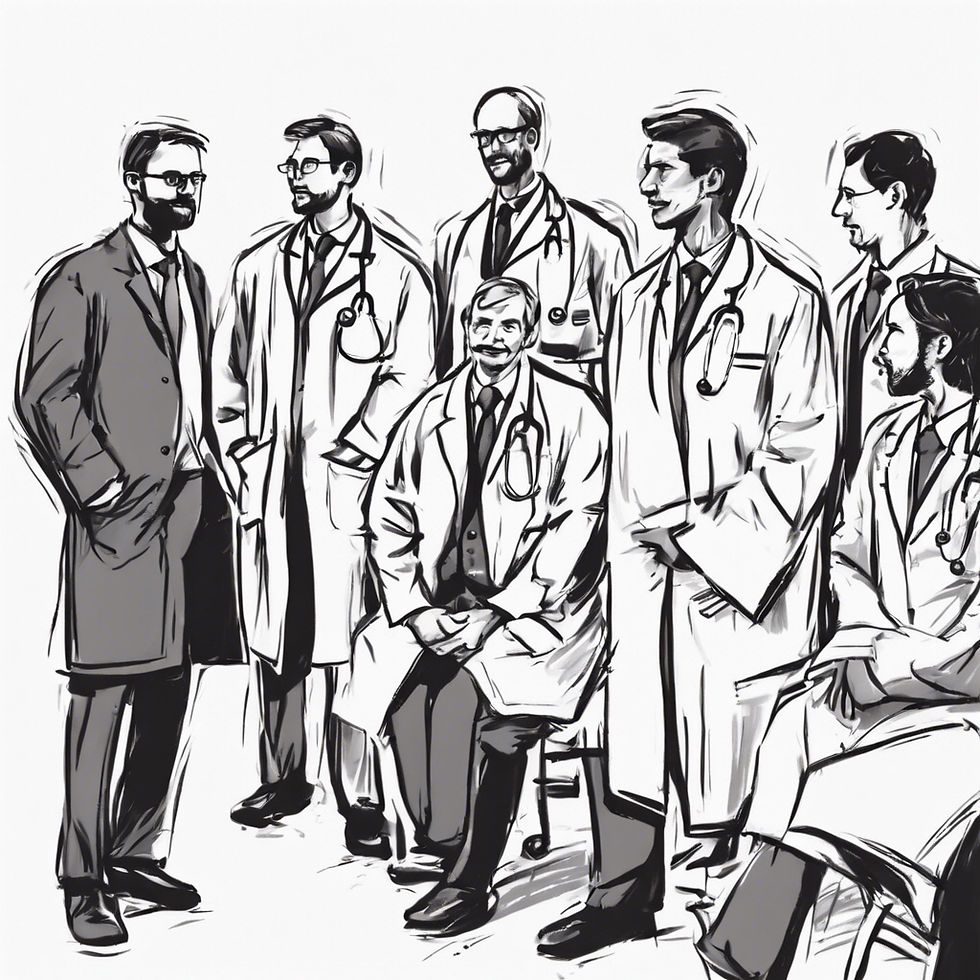The Digital Shift in Medical Congress Marketing
- G-Med Team

- Feb 17
- 3 min read
Before the global pandemic, medical congresses were primarily in-person events where healthcare professionals (HCPs) gathered to network, learn, and explore the latest industry advancements. However, the COVID-19 crisis forced an industry-wide pivot to virtual formats, introducing new challenges and opportunities for engagement.
Now, as we move into 2025, the question arises: Are virtual congresses becoming a thing of the past, or is a hybrid approach the future of medical events?
Medical congresses have long been an essential channel for scientific exchange, networking, and professional development. They provide a platform for showcasing groundbreaking research, medical technologies, and pharmaceutical advancements. However, the shift to digital has redefined the way HCPs engage with these events.
During the pandemic, virtual meetings expanded access, allowing attendees to participate regardless of geographic limitations. They also enabled precise tracking of engagement through digital analytics, offering insights into HCP preferences and behaviors. Yet, virtual formats presented limitations—networking felt impersonal, presenters struggled without real-time audience feedback, and time zone challenges disrupted participation.
While some may have assumed that in-person conferences would fully return post-pandemic, studies suggest otherwise. A significant 87% of HCPs still express a preference for virtual or hybrid events, underscoring the need for a flexible approach. Hybrid conferences combine the strengths of both formats, allowing attendees to choose how they participate. This model enhances accessibility while preserving the interactive, hands-on experiences of in-person meetings. For pharma companies and brands, the key challenge is ensuring engagement across both physical and digital audiences.
To maximize engagement in a hybrid setting, companies must tailor their approach to meet the needs of diverse audiences. One effective strategy is offering content in multiple formats. Since different attendees consume information in varied ways, brands should provide a mix of in-depth research papers for those who prefer detailed insights, concise and visually appealing materials for skimmers, and mobile-friendly content for on-the-go accessibility. Additionally, post-event summaries and follow-up materials help reinforce key takeaways for both in-person and virtual participants.
Leveraging virtual reality (VR) is another way to create immersive experiences that bridge the gap between physical and digital audiences. Equipping on-site attendees with VR headsets facilitates interactions with remote participants, fostering deeper connections. VR can also enhance product demonstrations and clinical trial simulations, offering an engaging and memorable way to communicate key messages.
Visual storytelling plays a crucial role in engaging audiences effectively. High-quality visuals, animated videos, and interactive infographics help make medical information more digestible and memorable. A well-produced video can be more impactful than a text-heavy presentation, ensuring that HCPs absorb and retain critical insights. Presenters should also incorporate visually compelling slide decks and infographics to support their messages.

Sharing printed or digital materials after the event helps sustain engagement long after the conference ends. Monitoring and optimizing engagement metrics is essential for improving future medical congresses. Digital tools allow for real-time tracking of audience interactions, measuring key factors such as viewing time, engagement rates, and post-event feedback. Brands should analyze this data to refine their strategies and maximize their impact on HCPs.
G-Med, the largest gated platform globally for physicians, offers an innovative solution for brands looking to optimize their digital congress presence. Their Conference Package provides exclusive sponsorship opportunities, display banner ads, and direct engagement with a targeted HCP audience. With 90 days of exclusivity, guaranteed impressions, and measurable KPIs, G-Med ensures brands achieve maximum exposure and impact. The package includes a minimum of 60,000 Display Banner Ad impressions, 30,000 logo and email banner impressions combined, and 30,000 email sends, alongside 8,000 minutes of total ad engagement.
As the industry moves forward, hybrid medical congresses will continue to evolve, integrating emerging technologies and data-driven engagement strategies. By leveraging digital tools and solutions like G-Med’s Conference Package, brands can create meaningful, high-impact connections with HCPs—regardless of how they choose to attend. Medical congresses remain a crucial pillar in pharma marketing. The key to success lies in adaptability, strategic engagement, and embracing the digital shift. Companies that invest in the right hybrid solutions will not only reach their target audience but also leave a lasting impact in an ever-changing healthcare landscape.
G-Med excels in HCP marketing by blending digital innovation with data-driven insights, creating an effective platform for reaching healthcare professionals, offering various advertising solutions. By using G-Med to engage HCPs, share data reports, and explore innovative channels, marketers can deliver targeted, impactful messages that foster strong connections. G-Med’s approach ensures that each campaign is tailored, scientifically rigorous, and effective, aligning perfectly with the best practices for successful HCP marketing.
Contact us today to learn more: Contact@g-med.com
.png)



